
In every tech-enabled industry, business outcomes are driven by three major factors: market, product definition, and development performance.
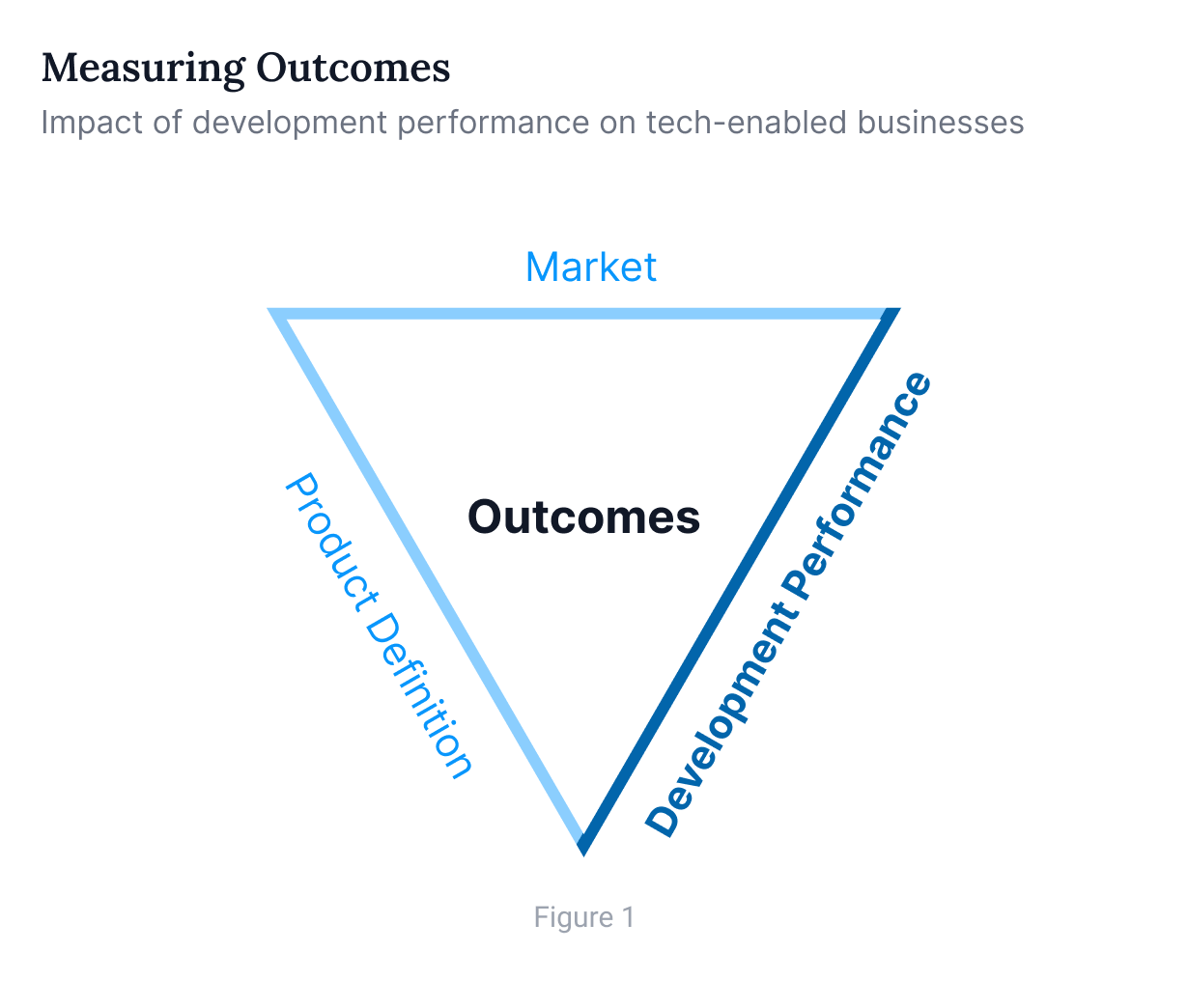
While revenue and rate of revenue growth are the best measures of business outcomes, it is important to isolate development performance to understand if you are maximizing a product’s revenue potential in its market. Effective teams unlock a higher speed and scale of market acquisition through better customer experience and faster time-to-market for new features.
Even with a world-class product management function, a low-performing development team adversely impacts your ability to win a market; however, it is also true that software development performance is highly dependent on product definition and market. If you define the wrong products in the wrong markets, it doesn’t matter how well your development teams are performing.
To improve development performance, it is important to start with simple, clear metrics. The four metrics that you should track in every board meeting are Features Delivered, Features Delivered per Engineer, Delivery Quality, and Team Size.
These metrics are simple to collect and measure, requiring no more than a source code management tool like GitHub, BitBucket, or GitLab. They are also standardized to work for any company, regardless of how their teams operate. And third, they are a combination of total and normalized outputs, allowing you to benchmark your performance against yourself and other companies as you scale your engineering team. Together, these metrics serve as the foundation to measuring and improving software development performance.
The first KPI you should track is features delivered vs. team size. Whether you are scaling up or down, it is important to understand how changes to your engineering team impact your development performance. Companies scaling up achieve positive returns to scale when features delivered increases at a faster rate than team size. Conversely, companies that are delivering features at a slower rate as they hire more engineers experience negative returns to scale.
It is equally important to track development metrics if your company is scaling down. Companies achieve better unit economics when features delivered decreases at a slower rate than team size. Unit economics decline when the opposite is true: features delivered decreases at a faster rate than team size.
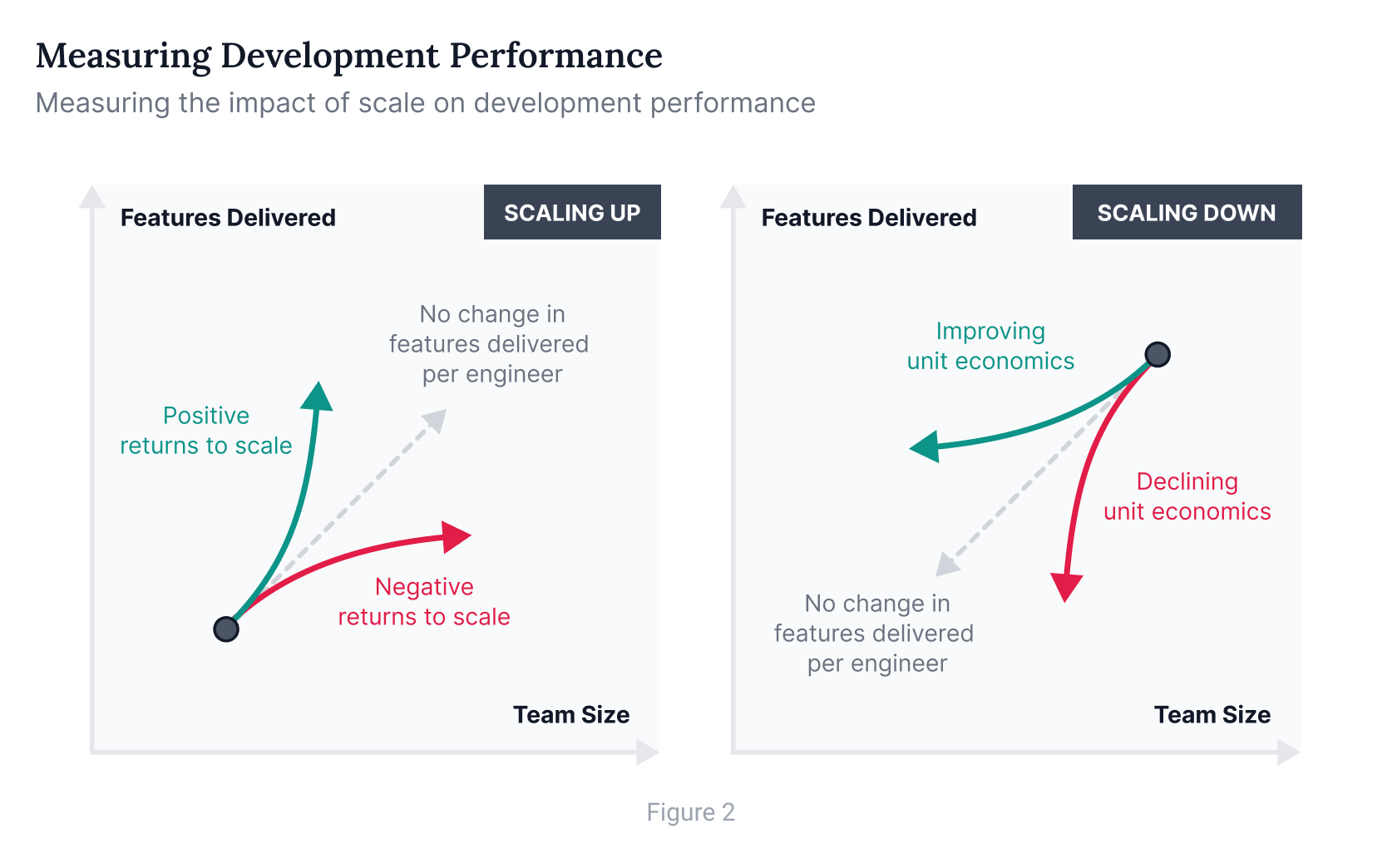
Most companies experience diminishing returns as they scale — codebases become more complex, products get more mature, and performance converges to the mean. Elite performers increase the rate at which they are shipping new features as they scale, unlocking their potential to drive higher acquisition of market share.
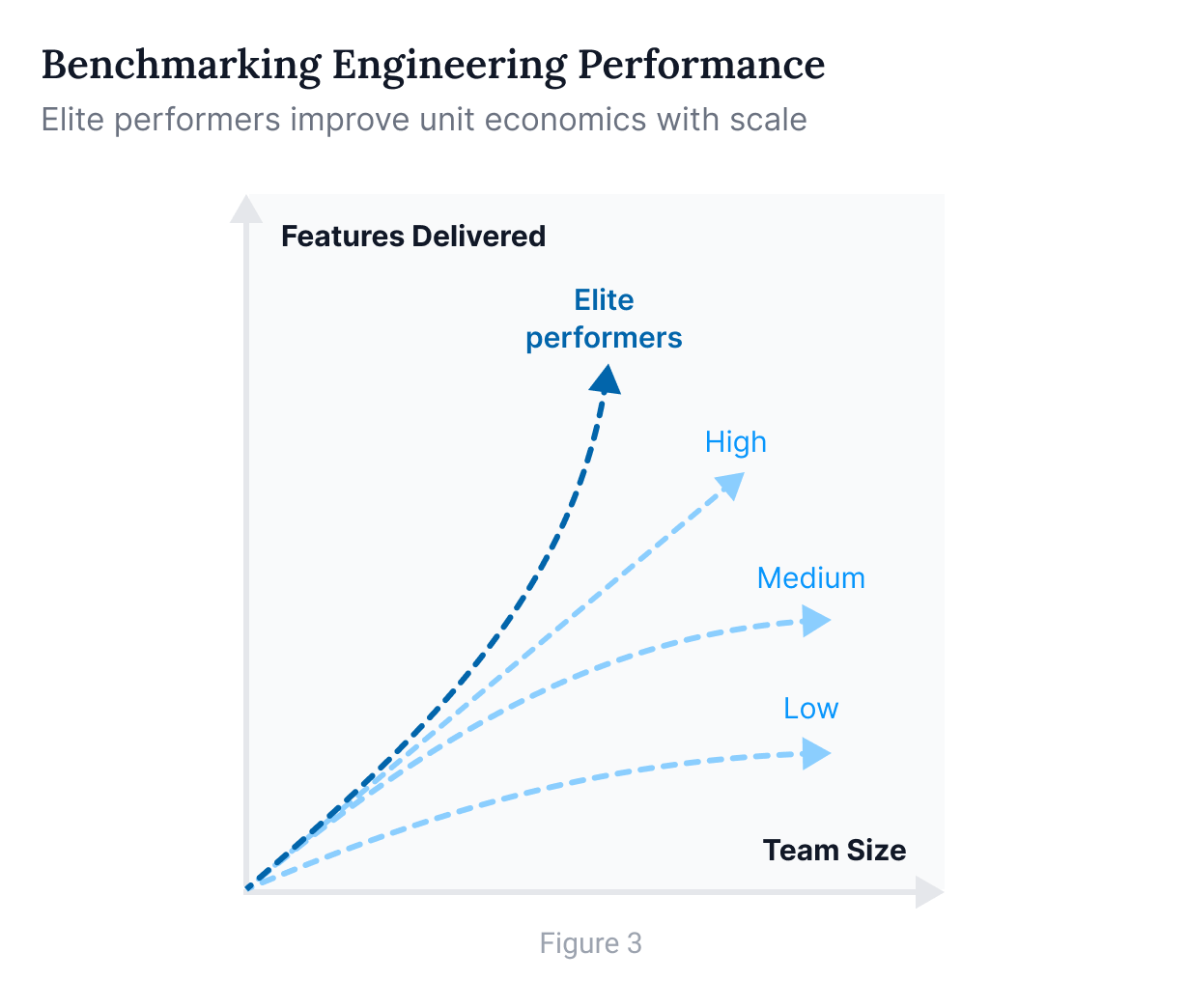
The second development performance KPI is change in features delivered per engineer, which helps you understand the ROI of your engineering investments. For instance, if you recently rolled out a new developer tool, such as GitHub Copilot, you can measure the impact to your engineering KPIs. Other investments you might measure include DevOps, developer onboarding, and key leadership hires.
While you are your own best reference class, it is also important to track your performance relative to global benchmarks at your scale. By comparing yourself to elite performers (top 10%), you can better understand where you are on the path to building a world-class engineering team.
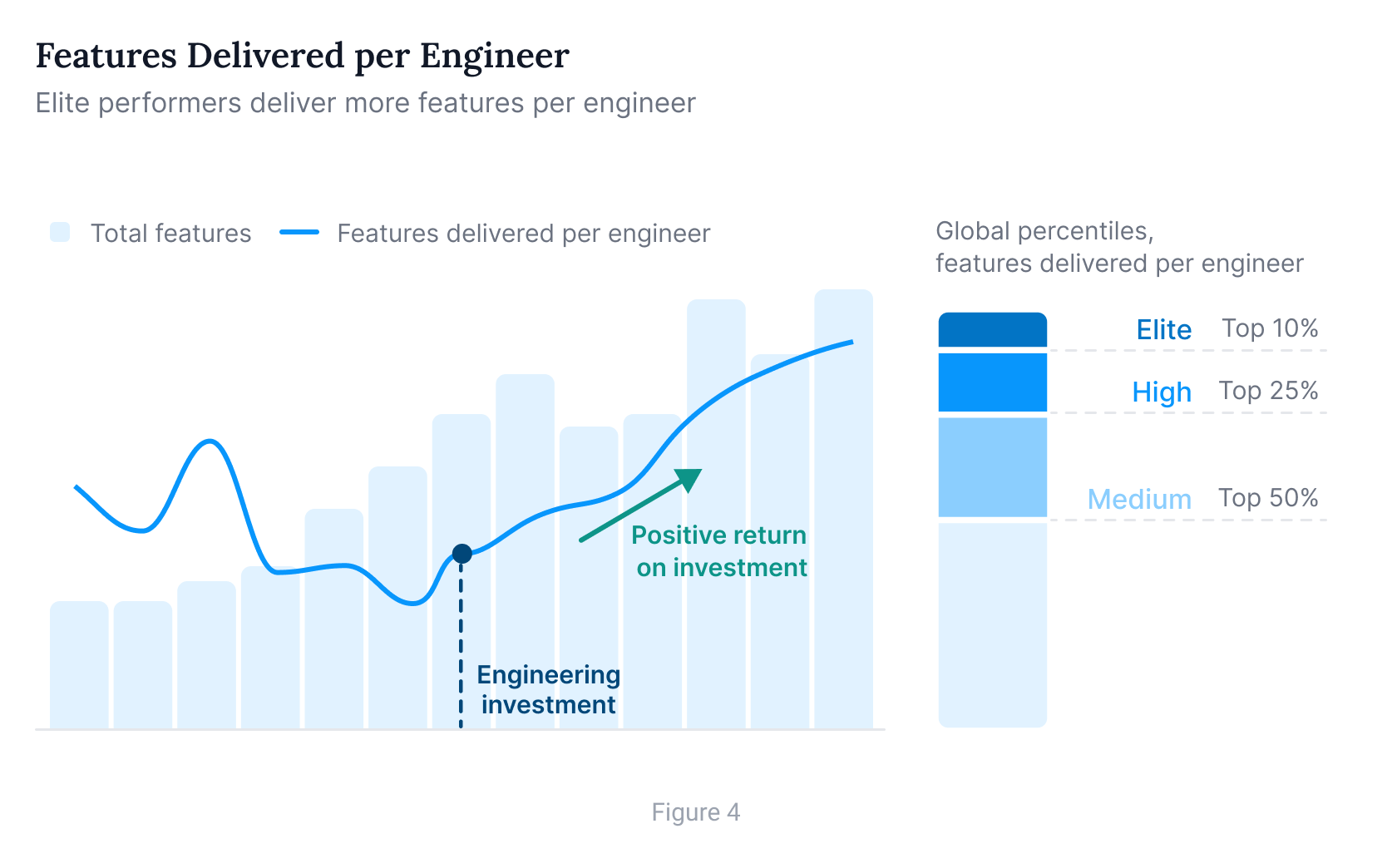
The third development performance KPI you should track is features delivered vs. churn and refactor. Companies battling quality issues spend more time on churn and refactor and less time delivering new features. While maintaining a balance is good, an increasing amount of churn and refactor may indicate that investments are needed to improve quality (e.g. automating testing, burning down legacy tech debt) and unlock future potential for feature development.

If you have identified that your company is underperforming, then identifying bottlenecks can unlock new growth. For instance, making investments in quality (e.g. automating testing, building out a quality assurance function) can lead to a shift-left in productivity and have a large, quantifiable impact on how many features your engineering team is able to deliver. Similarly, investing in new tools (e.g. AI, DevOps) and making process changes (e.g. restructuring teams, key leadership hires) can unlock new opportunities for growth.
Once you’ve answered questions about your company’s overall engineering performance, then you can dial into more actionable metrics that help teams improve. By surfacing data at every level of the organization — including investors, heads of engineering, department heads, managers, and individual contributors — companies can create feedback loops that drive organizational change. For instance, heads of engineering may track quarterly changes in efficiency and adjust hiring plans accordingly, while managers may use weekly reports to track their team’s work in progress.
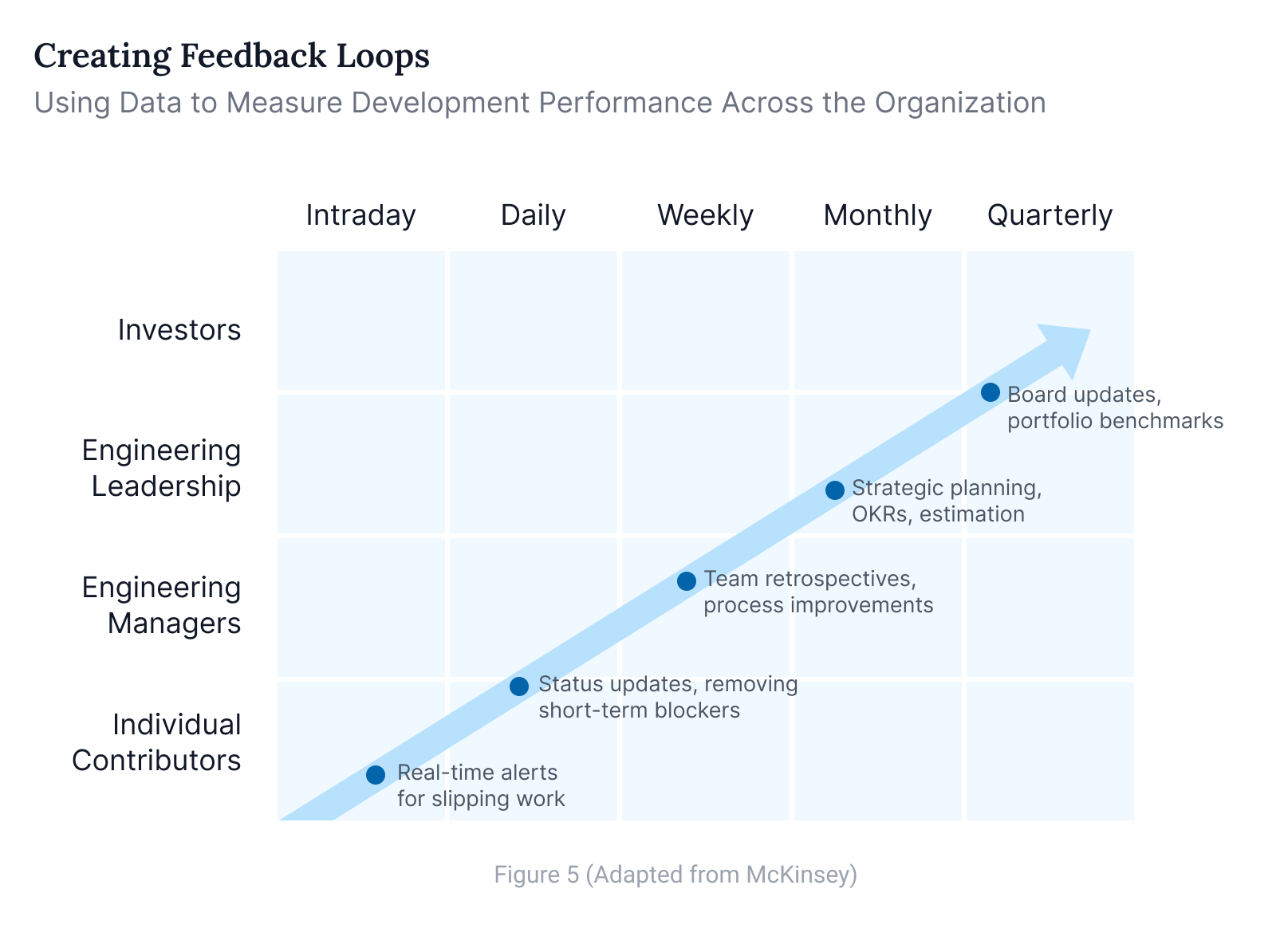
While you are your own best reference class, it is critical to set targets based on industry benchmarks for elite performance. Companies should benchmark their performance against companies of similar scale and industry. Teams should also consider other factors when setting targets, such as team composition, types of tools, and product maturity.
Measuring engineering performance works best when combined with a culture of trust and transparency. Choosing the right metrics and implementing them in the right way is the key to setting teams on the path to high performance. A key consideration is protecting individual privacy, which enables companies to create a workplace that values psychological trust and safety, a key driver of innovation and organizational learning.
Measuring performance is essential for companies that want to stay competitive in today’s fast-paced market. Companies that have both strong product definition and development performance are most likely to succeed in tech-enabled industries.
When measuring development performance, companies should strive for a process that is simple, standardized, and allows for ease of comparison to global benchmarks. By surfacing engineering metrics across every level of the organization, without compromising individual privacy, companies can empower teams to improve their performance while maintaining a culture of psychological safety.
Connect your tools and visualize your data in minutes. When you sign up, you’ll get immediate access to your data. No demo or sales calls.